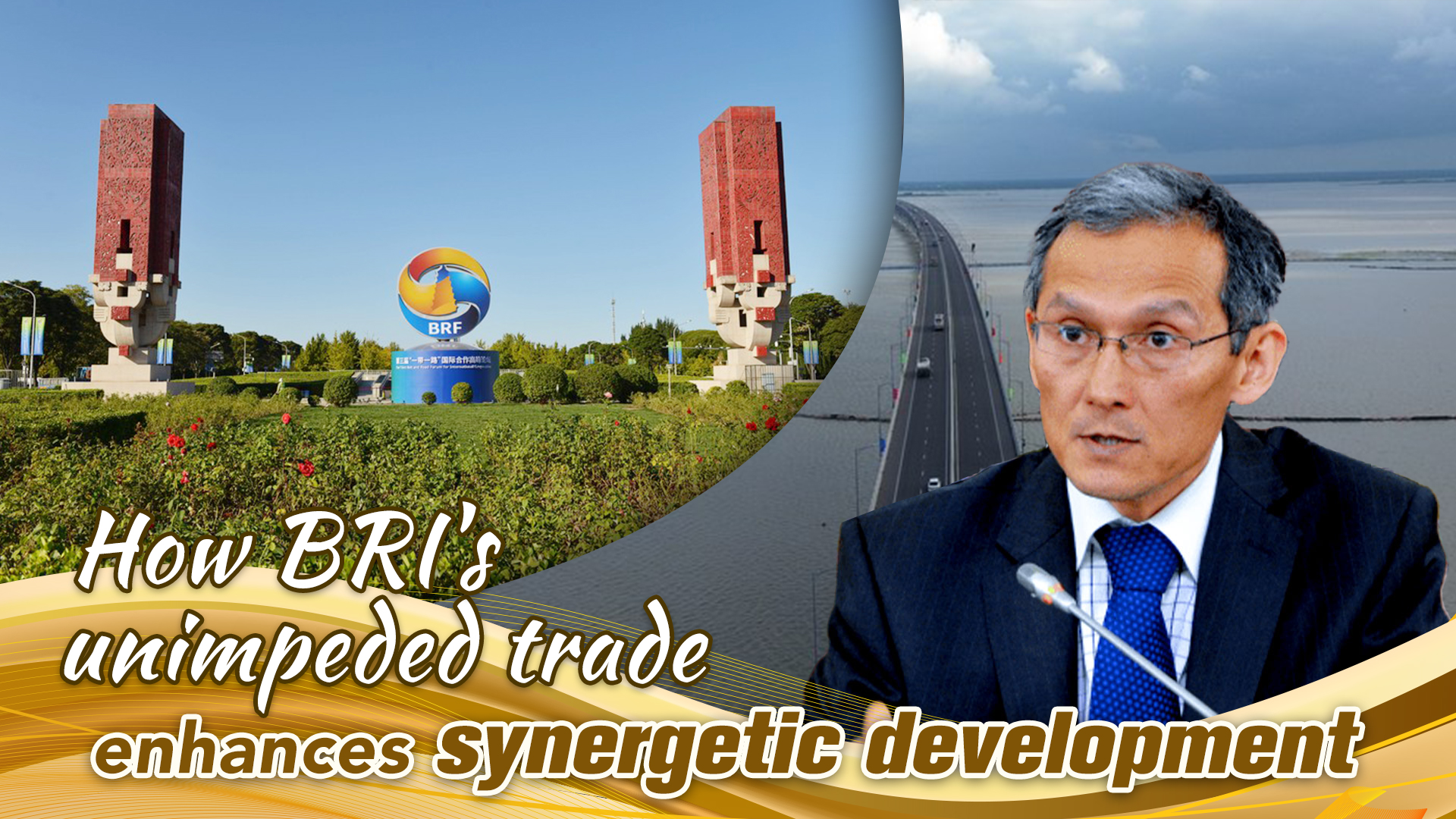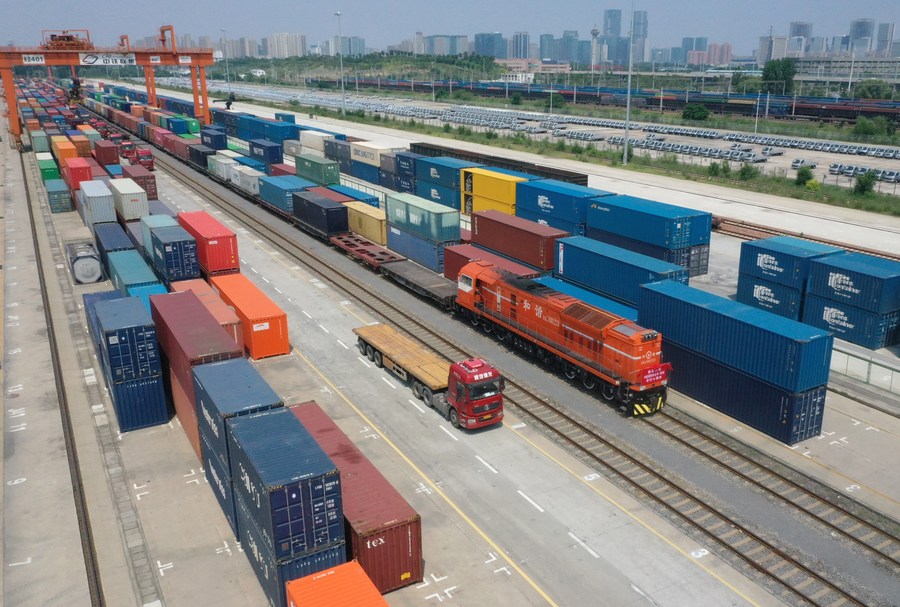
Editor's note: Since its inception in 2013, the Belt and Road Initiative (BRI) has transformed ideas into actions, from a vision into reality, and from a general framework into concrete projects. Evaluating the BRI's accomplishments over the last decade raises questions. How has the BRI advanced policy coordination, infrastructure connectivity, unimpeded trade, financial integration, and closer people-to-people ties? "BRI: A Road for the Common Good" is a five-part series that delves into the BRI's achievements of the past decade. The fourth essay explores unimpeded, convenient and efficient trade.
The most important characteristic of the Belt and Road Initiative (BRI) is the development of economic ties between different countries and regions through unimpeded trade over land and sea, and at the same time creating synergy between participating countries. A World Bank report revealed that if the proposed BRI projects are executed, travel times along the participating countries' transport corridors will reduce by 12 percent by 2030 due to improved transport infrastructure. This reduction in travel time would, in turn, decrease trade costs.
This cost reduction could lead to a 2.8 to 9.7 percent increase in trade for participating countries and 1.7 to 6.2 percent for non-participating ones. As a result, it would show an additional 0.7 percent of annual global economic growth or half a trillion dollars. Real per capita incomes could rise by 0.7 to 2.9 percent, lifting about 7.6 million people out of extreme poverty and 32 million out of moderate poverty.
However, significant global changes have occurred since 2019. The COVID-19 pandemic has had an unprecedented impact on the world, causing development to stall for several years. New trade barriers are also being erected, the de-globalization process is gaining momentum, developed economies are experiencing runaway inflation, and global economic growth is slowing down.
But, as Chinese President Xi Jinping remarked at the opening ceremony of the third Belt and Road Forum for International Cooperation on October 18, Belt and Road cooperation has opened up a new path for exchanges among countries, and established a new framework for international cooperation.
In just a decade, Central Asia has become an effective transport bridge connecting two critical centers of Eurasian economic power – China and Europe. This bridge quickly transformed a landlocked area into a land-connected space. We believe the new transport routes throughout the region will soon be known as the revolutionary "new great silk road."
Between January and November of the year 2022, 15,162 freight trains travelled between Asia and Europe, transporting 1.48 million TEUs of cargo. Over 10 years, China-Europe freight trains have made 77,000 trips, carrying 7.31 million TEU containers of goods worth more than $340 billion.

A China-Europe freight train bound for Hamburg, Germany, waiting for departure at Putian Station in Zhengzhou, capital of central China's Henan Province, July 18, 2023. /Xinhua
A China-Europe freight train bound for Hamburg, Germany, waiting for departure at Putian Station in Zhengzhou, capital of central China's Henan Province, July 18, 2023. /Xinhua
Soon, the speed of cargo delivery will increase due to improved hard and soft infrastructure. In the latter case, by agreement with regulators of partner countries, customs procedures will be optimized, and routes, dates and places of departure and arrival of trains will be approved in advance.
Those impressive figures prove that modern rail transport offers significant benefits to supply chains by increasing their reliability and flexibility. Additionally, it reduces the need for product inventories, quickly releasing working capital, and lowering insurance costs. This will further increase trade among BRI partner countries, which is conducive to people's livelihoods, the countries' social-economic development and regional connectivity.
Over the years, the level of unimpeded, convenient and efficient trade among BRI participating countries has been continuously improved, trade liberalization has been facilitated, and the scale of trade and investment has steadily expanded.
Statistics, from the white paper entitled "The Belt and Road Initiative: A Key Pillar of the Global Community of Shared Future," shows that from 2013 to 2022, the cumulative value of imports and exports between China and BRI partner countries reached $19.1 trillion, with an average annual growth rate of 6.4 percent. In 2022, the value of imports and exports between China and partner countries reached nearly $2.9 trillion, accounting for 45.4 percent of China's total foreign trade over the same period.
Facilitating trade and investment is a major task in building the Belt and Road. New technologies reduce distances, promoting trade and investment, and bringing people and cultures closer together. In the same way that the ancient Silk Road created the conditions for cross-cultural intellectual dialogue and progress and shaping modern civilizations, improvements of transportations that cross Eurasia bring economic prosperity through partnership and create deeper intimacy and trust between nations. By directing collective energy to revitalize new routes, the BRI revives the unique spirit of the ancient Silk Road as a trade corridor and an open passage connecting people and cultures.
Djoomart Otorbaev, the former prime minister of the Kyrgyz Republic.
(If you want to contribute and have specific expertise, please contact us at opinions@cgtn.com. Follow @thouse_opinions on Twitter to discover the latest commentaries in the CGTN Opinion Section.)